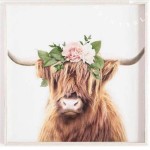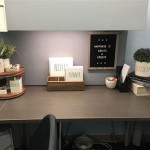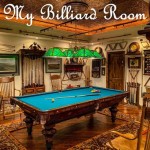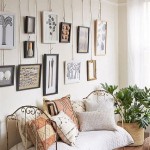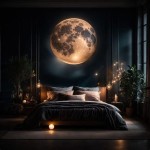Retro Themed Room Decoration: A Guide to Nostalgic Design
The allure of the past continues to captivate designers and homeowners alike, inspiring a resurgence of retro themed room decoration. This design philosophy embraces the aesthetics and cultural influences of bygone eras, transforming living spaces into evocative reflections of specific decades. From the vibrant hues of the 1950s to the groovy patterns of the 1970s, the options for creating a retro-inspired room are vast and varied. Careful consideration of color palettes, furniture styles, and decorative elements is paramount to achieve an authentic and visually appealing design.
Defining the Retro Aesthetic
The term “retro” itself signifies a look that borrows from past trends. However, the specific era referenced is critical to a successful design implementation. Before starting a retro room design, it is essential to select a specific era for inspiration. The selected decade will dictate the color schemes, furniture styles, and accessories used. The 1950s, known for its atomic age designs, are a popular choice, often featuring pastel colors, chrome accents, and sleek, streamlined furniture. The 1960s and 1970s offer a more eclectic approach, with bold color palettes, geometric patterns, and a focus on comfort and functionality. Understanding the nuances of each period is paramount to creating an accurate and cohesive retro theme.
Color Palette Selection
Color is a defining element of retro interior design. Each decade boasts distinct color palettes often reflecting the period’s cultural trends and technological advancements. The 1950s favored pastel shades such as seafoam green, baby blue, and pale pink, frequently contrasted with crisp white or black accents. The 1960s embraced brighter and bolder colors, including avocado green, mustard yellow, and burnt orange. These vibrant hues were often paired with psychedelic patterns and geometric shapes. The 1970s saw the introduction of earth tones, such as browns, oranges, and olive greens, reflecting the decade's environmental consciousness. When selecting a color palette, considering the room's natural lighting and size is essential. Lighter colors can make a small room feel more spacious, while bolder colors can be effective in creating a focal point in a larger space.
Furniture and Furnishings
Furniture plays a pivotal role in establishing the desired retro aesthetic. Each decade presents unique furniture designs. The 1950s favored streamlined, functional pieces often constructed from wood, metal, and laminate. Iconic pieces include the Eames chair, kidney-shaped coffee tables, and formica-topped dining sets. The 1960s introduced more organic shapes and bolder designs. Furniture often featured curved lines, vibrant fabrics, and a focus on comfort. Consider pieces like the egg chair and the tulip table. The 1970s saw the rise of modular furniture, shag rugs, and low-slung seating. Sourcing original vintage furniture can be a challenge, but reproductions and replicas are readily available. When incorporating furniture into a retro design, it is vital to consider the scale and proportion of the pieces in relation to the room's size.
Textiles and Patterns
Textiles and patterns offer another critical element in crafting a retro-themed room. The use of appropriate fabrics and patterns can significantly enhance the overall aesthetic and create a sense of historical accuracy. The 1950s favored geometric patterns, polka dots, and floral prints. Fabrics like cotton, linen, and vinyl were commonly used. The 1960s embraced psychedelic patterns, bold geometric shapes, and vibrant color combinations. Popular fabrics included velvet, corduroy, and shag. The 1970s continued with geometric patterns but also featured floral prints and textured fabrics. Consider using shag rugs, macrame wall hangings, and patterned curtains to create a visual impact. Mixing and matching patterns strategically is a key aspect of retro design. Ensure the chosen patterns complement each other in terms of color and scale to avoid visual clutter.
Accessories and Decorative Elements
No retro room is complete without the appropriate accessories and decorative elements. These details add character, personality, and authenticity to the design. Accessorizing with vintage items like radios, record players, and rotary phones can further enhance the retro aesthetic. Decorative elements should align with the chosen decade's style. For the 1950s, consider chrome accents, atomic age clocks, and boomerang-shaped objects. The 1960s can incorporate lava lamps, posters, and lava lamps. The 1970s might include macramé wall hangings, beanbag chairs, and vintage posters. Wall art is also a crucial element. Selecting period-appropriate artwork, such as vintage movie posters, pop art prints, or abstract paintings, can inject color and character into the space.
Lighting Design
Lighting plays a crucial role in the ambiance of any room, and this is especially true for retro designs. The type of lighting used can greatly influence the overall feel of the space. Choose lighting fixtures that align with the selected era to enhance the retro aesthetic. The 1950s often featured atomic-inspired chandeliers, sleek table lamps with streamlined bases, and globe pendant lights. The 1960s embraced more sculptural and innovative lighting designs, such as sputnik chandeliers, floor lamps with geometric shades, and pendant lights with bold colors. The 1970s continued with the use of these lighting designs. Consider layering different types of lighting, including ambient lighting, task lighting, and accent lighting, to create a flexible and functional space. Ambient lighting provides overall illumination, task lighting supports specific activities, and accent lighting highlights decorative features like artwork or architectural details.
:max_bytes(150000):strip_icc()/final-w.-large-mirror-bb2c331d25e743968d5ec1fd926adf55.jpg?strip=all)
25 Vintage Bedrooms That Prove Decor S Worth

21 Antique Vintage Home Decor Ideas Extra Space Storage

Vintage Decor 20 Retro Designs To Revisit Bob Vila

A Comprehensive Guide To Various Vintage Bedroom Ideas

Retro Living Room Ideas And Decor Inspirations For The Modern Home Decoist

10 Vintage Bedroom Ideas That Are Timeless Swyft

20 Totally Vintage Bedrooms For You Room Decor Decoholic

My Houzz Groovy 1970s Retro Pad In Los Angeles Tune To A Dazzling Kaleidoscope Of Colors Collectibles And Vinta Bedrooms Home Decor Room

A Comprehensive Guide To Various Vintage Bedroom Ideas

20 Totally Vintage Bedrooms For You Room Decor Decoholic

